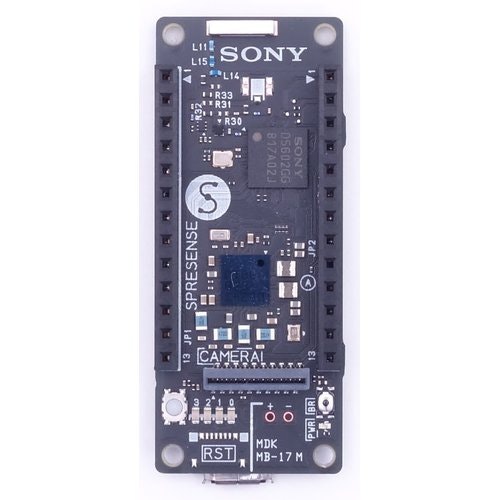初めに
MQTTの勉強とLTE使ってM2Mっぽいものを見せてくれよというリクエストから、Spresense のM2MをLTE経由でMQTTのpub/subを使ってやってみようと作ってみました。このコードではM2Mって感じじゃないのですがベースのプログラムとして使えるかな~と思って言います。
具体的には、例えば、東京側にあるSpresenseの Keypadで、1~4の数字を入力すると、それに合わせて大阪にあるSpresenseのLED0~3が点灯するというものです。
※東京、大阪はイメージです。
Keypadも使うので、今回は、ArduinoIDEを使って実現しようとしました。
実は、これだと動きがもっさりしています。これを解消する記事は、別途書こうと思っていますが、それほど反応速度がいらないようなものには、非常に簡単にできるのでまずはここまでということで。
用意したもの
SPRESENSEメインボード[CXD5602PWBMAIN1]
https://www.switch-science.com/catalog/3900/

SPRESENSE LTE拡張ボード [CXD5602PWBLM1J]
https://www.switch-science.com/catalog/5999/

IIJmioプリペイドパック
https://s.iijmio.jp/prepaid/
と、Mainボード、LTE、SIMをすべて2セットづつ。
それに、Qwiicのコネクタとキーパッド。
SPRESENSE用Qwiic接続基板
https://www.switch-science.com/catalog/6318/

Qwiic - キーパッド(12ボタン)
https://www.switch-science.com/catalog/5535/

そうです。使いまわしです。苦笑い…。
ブログ(元ネタ)
この記事は、以下のブログに過去に投稿したもののまとめです。
LTEボードとMQTTを使ってM2Mを体感する その1
http://spresense.livedoor.blog/archives/28134913.html
LTEボードとMQTTを使ってM2Mを体感する その2
http://spresense.livedoor.blog/archives/28174660.html
サンプルプログラム
Spresense ArduinoIDE の LTE のサンプルの中に、MQTT で通信するサンプルがあります。
これを見ることで、LTE を使った MQTT通信 のサンプルが作れます。
LTEを使う共通部分
LTEを使う上での共通定義部分は以下になります。
# include <LTE.h>
# include <ArduinoMqttClient.h>
// APN name
# define APP_LTE_APN "iijmio.jp" // replace your APN
/* APN authentication settings
* Ignore these parameters when setting LTE_NET_AUTHTYPE_NONE.
*/
# define APP_LTE_USER_NAME "mio@iij" // replace with your username
# define APP_LTE_PASSWORD "iij" // replace with your password
// APN IP type
# define APP_LTE_IP_TYPE (LTE_NET_IPTYPE_V4V6) // IP : IPv4v6
// APN authentication type
# define APP_LTE_AUTH_TYPE (LTE_NET_AUTHTYPE_CHAP) // Authentication : CHAP
/* RAT to use
* Refer to the cellular carriers information
* to find out which RAT your SIM supports.
* The RAT set on the modem can be checked with LTEModemVerification::getRAT().
*/
# define APP_LTE_RAT (LTE_NET_RAT_CATM) // RAT : LTE-M (LTE Cat-M1)
LTE lteAccess;
LTEClient client;
当然ですが、IIJ MIO 用のサンプルです。
異なる SIM を使う人は変更してください。
また、サンプルコードにある doAttach() は、そのまま使えるので使います。
void doAttach()
{
while (true) {
/* Power on the modem and Enable the radio function. */
if (lteAccess.begin() != LTE_SEARCHING) {
Serial.println("Could not transition to LTE_SEARCHING.");
Serial.println("Please check the status of the LTE board.");
for (;;) {
sleep(1);
}
}
/* The connection process to the APN will start.
* If the synchronous parameter is false,
* the return value will be returned when the connection process is started.
*/
if (lteAccess.attach(APP_LTE_RAT,
APP_LTE_APN,
APP_LTE_USER_NAME,
APP_LTE_PASSWORD,
APP_LTE_AUTH_TYPE,
APP_LTE_IP_TYPE,
false) == LTE_CONNECTING) {
Serial.println("Attempting to connect to network.");
break;
}
/* If the following logs occur frequently, one of the following might be a cause:
* - APN settings are incorrect
* - SIM is not inserted correctly
* - If you have specified LTE_NET_RAT_NBIOT for APP_LTE_RAT,
* your LTE board may not support it.
*/
Serial.println("An error has occurred. Shutdown and retry the network attach preparation process after 1 second.");
lteAccess.shutdown();
sleep(1);
}
}
MQTT通信を使う共通部分
MQTTで通信する上での共通定義部分は以下になります。
今回は、コードの単純化と応答速度を鑑みて、特に認証もセキュア通信もしませんでした。
// MQTT broker
# define BROKER_NAME "test.mosquitto.org"
# define BROKER_PORT 1883
// MQTT topic
# define MQTT_TOPIC "spresense/mqtt"
MqttClient mqttClient(client);
char broker[] = BROKER_NAME;
int port = BROKER_PORT;
char topic[] = MQTT_TOPIC;
で、ここにMQTTの クライアントID が必要です。
これは、punlisher/subscriberごとに代わるので、publisher側は、
// MQTT ID
# define MQTT_ID "spresense_pub"
と定義し、subscriber側は、
// MQTT ID
# define MQTT_ID "spresense_sub"
と定義します。
また、今回は Broker には、mosquitoの公開サーバ を使いました。
mosquitoはこちら。
今回は、この辺の説明は飛ばします。
これで、LTE経由でのMQTT通信の準備ができました。
Publisher側のコード
Publisher側は、Keypadをつかうので、includeとインスタンス定義に以下を追加します。
# include <Wire.h>
# include "SparkFun_Qwiic_Keypad_Arduino_Library.h"
KEYPAD keypad1; //Create instance of this object
setup() は以下になります。
void setup()
{
// Open serial communications and wait for port to open
Serial.begin(115200);
while (!Serial) {
; // wait for serial port to connect. Needed for native USB port only
}
Serial.println("Starting .");
if (keypad1.begin() == false) {
Serial.println("Keypad does not appear to be connected. Please check wiring. Freezing...");
while (1);
}
Serial.println(keypad1.getVersion());
/* Connect LTE network */
doAttach();
// Wait for the modem to connect to the LTE network.
Serial.println("Waiting for successful attach.");
LTEModemStatus modemStatus = lteAccess.getStatus();
while(LTE_READY != modemStatus) {
if (LTE_ERROR == modemStatus) {
Serial.println("An error has occurred. Shutdown and retry the network attach process after 1 second.");
lteAccess.shutdown();
sleep(1);
doAttach();
}
sleep(1);
modemStatus = lteAccess.getStatus();
}
Serial.println("attach succeeded.");
Serial.print("Attempting to connect to the MQTT broker: ");
Serial.println(broker);
mqttClient.setId(MQTT_ID);
while (!mqttClient.connect(broker, port)) {
Serial.print("MQTT connection failed! Error code = ");
Serial.println(mqttClient.connectError());
sleep(1);
}
Serial.println("You're connected to the MQTT broker!");
ledOn(LED0);
ledOn(LED1);
ledOn(LED2);
ledOn(LED3);
}
データを送りユーティリティー関数として、sendData を用意します。
void sendData(String testString)
{
mqttClient.beginMessage(topic);
mqttClient.print(testString);
mqttClient.endMessage();
}
これで、MQTT の publish ができるようになったので、loop() の中で、keypad の1から4の入力を検出して、それに合わせた 数字 を MQTT で送るようにします。
void loop()
{
keypad1.updateFIFO(); // necessary for keypad to pull button from stack to readable register
char button = keypad1.getButton();
if (button > 0) {
switch (button) {
case '1':
sendData(String(1));
break;
case '2':
sendData(String(2));
break;
case '3':
sendData(String(3));
break;
case '4':
sendData(String(4));
break;
default:
break;
}
}
}
これで、keypad の入力の数字に合わせて数字を送ることができました。
Subscriber側のコード
Publisher側は、受け取った文字に合わせてLEDをつけるだけなので、特に追加のincludeとインスタンス定義はありません。
setup() は以下になります。
void setup()
{ // Open serial communications and wait for port to open
Serial.begin(115200);
while (!Serial) {
; // wait for serial port to connect. Needed for native USB port only
}
Serial.println("Starting .");
/* Connect LTE network */
doAttach();
// Wait for the modem to connect to the LTE network.
Serial.println("Waiting for successful attach.");
LTEModemStatus modemStatus = lteAccess.getStatus();
while(LTE_READY != modemStatus) {
if (LTE_ERROR == modemStatus) {
Serial.println("An error has occurred. Shutdown and retry the network attach process after 1 second.");
lteAccess.shutdown();
sleep(1);
doAttach();
}
Serial.println("attach succeeded.");
Serial.print("Attempting to connect to the MQTT broker: ");
Serial.println(broker);
mqttClient.setId(MQTT_ID);
while (!mqttClient.connect(broker, port)) {
Serial.print("MQTT connection failed! Error code = ");
Serial.println(mqttClient.connectError());
sleep(1);
}
mqttClient.subscribe(topic);
Serial.println("You're connected to the MQTT broker!");
}
これで、MQTT の subscribe ができるようになったので、loop() の中で、受け取った文字に合わせて LED を点灯するようにします。
void loop()
{
int messageSize = mqttClient.parseMessage();
if (messageSize) {
while (mqttClient.available()) {
switch (mqttClient.read()) {
case '1':
ledOn(LED0);
ledOff(LED1);
ledOff(LED2);
ledOff(LED3);
break;
case '2':
ledOff(LED0);
ledOn(LED1);
ledOff(LED2);
ledOff(LED3);
break;
case '3':
ledOff(LED0);
ledOff(LED1);
ledOn(LED2);
ledOff(LED3);
break;
case '4':
ledOff(LED0);
ledOff(LED1);
ledOff(LED2);
ledOn(LED3);
break;
default:
break;
}
}
Serial.println();
}
}
これで リモート にある Spresense の キーパッド 入力に合わせて LEDを点灯させることができました。
動作結果
動かすとこんな感じになります。
#Spresense #LTE で、#MQTT 使って、#M2M してみた。#KeyPad で押した数字の #LED が点いた!
— 「SPRESENSEに興味あり」 (@spresense) November 26, 2021
これで、東京から大阪のSpresenseが操作できるね。https://t.co/g9hQalUcD6 pic.twitter.com/3lgouwfItQ
冒頭にも書いたとおり、かなり動きがもっさりしますが、これは、Arduino の MQTTライブラリでsubscribe することが原因のようです。SDKで動かせば早くなります。
機会 があればこちらも書きま~す。